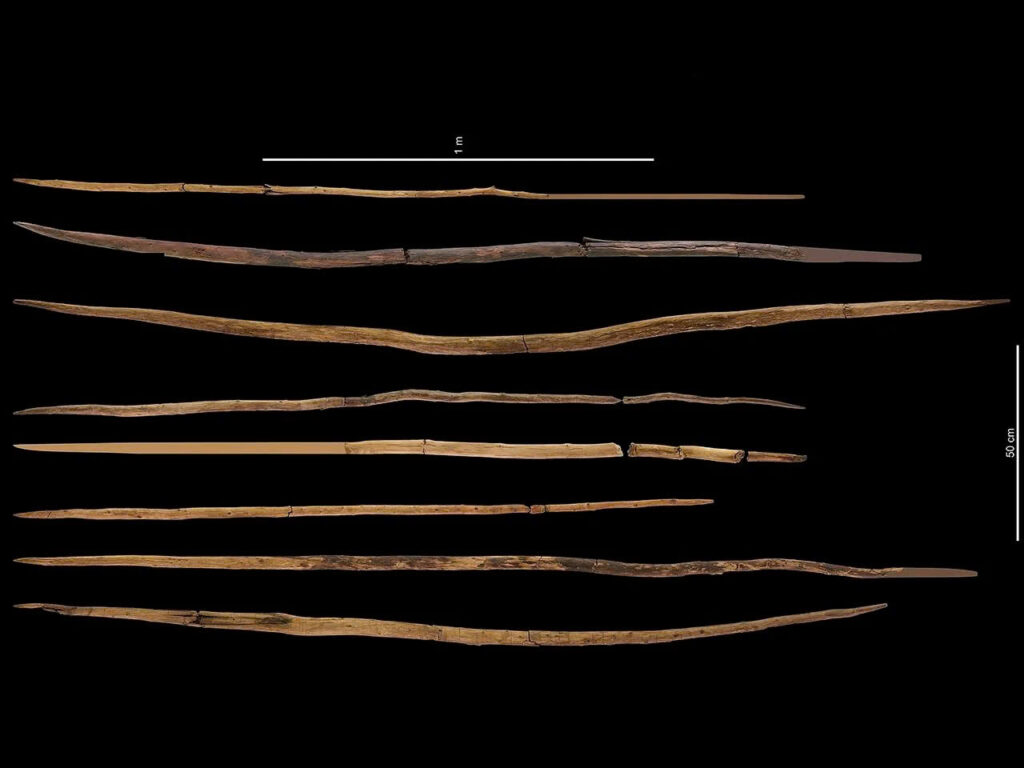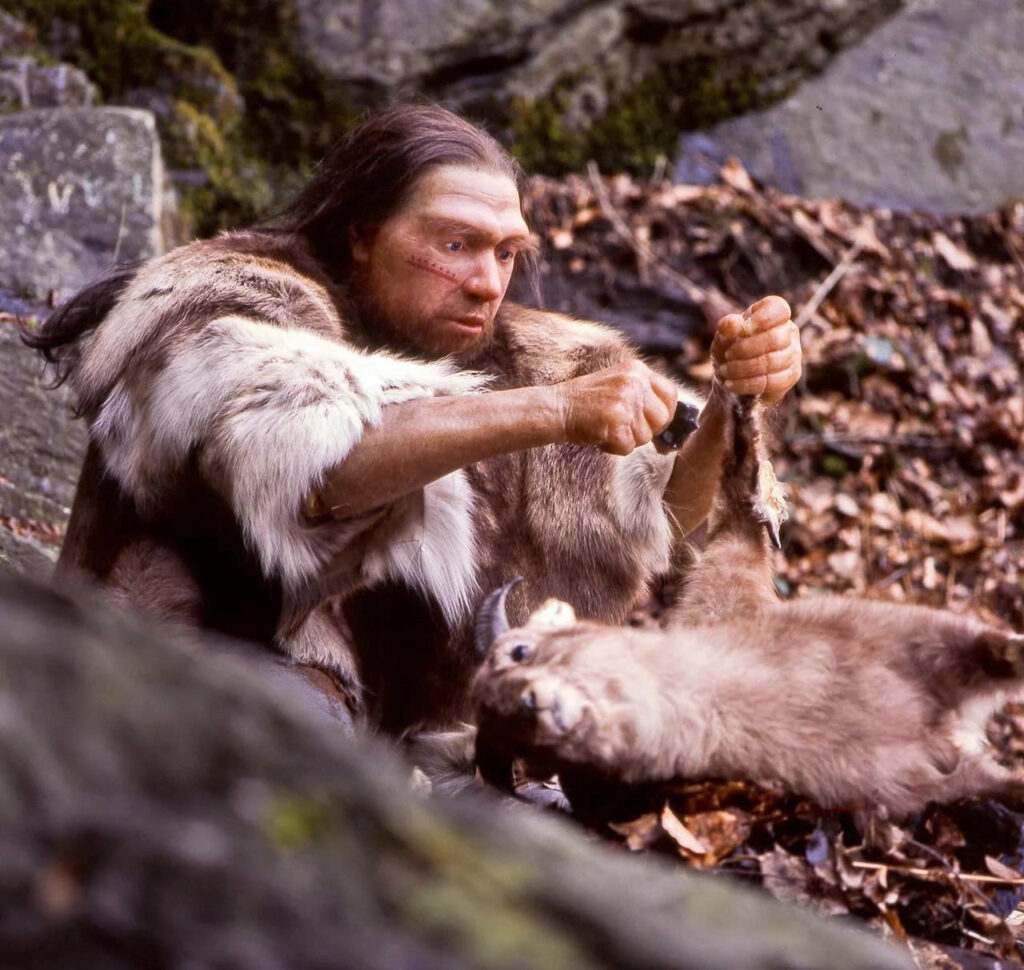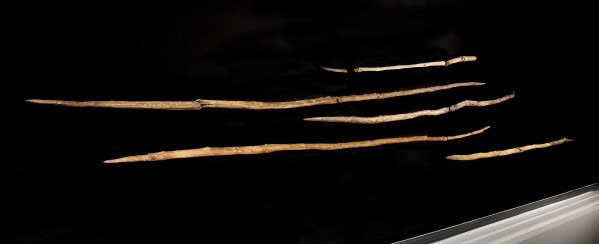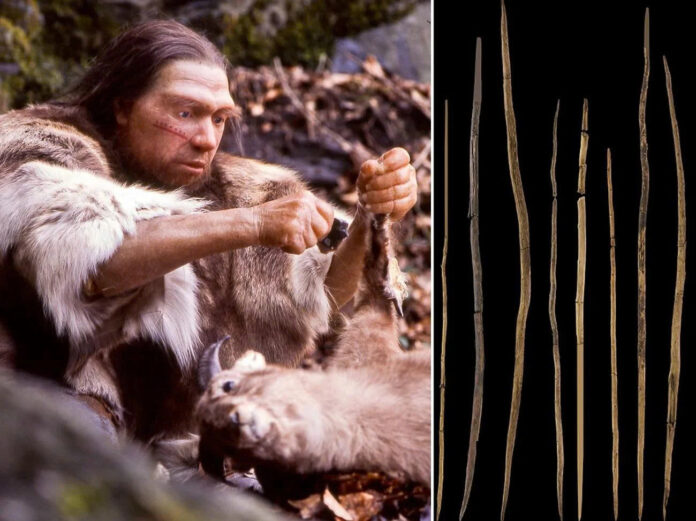A groundbreaking archaeological revelation has rewritten our understanding of Neanderthal capabilities, revealing that these ancient relatives were far more sophisticated than previously imagined. Recent scientific analysis has dramatically altered the timeline of prehistoric wooden hunting weapons discovered in Germany, painting a vivid picture of organized, intelligent hunters who mastered both craftsmanship and coordinated hunting strategies.
The Schöningen Archaeological Marvel
Deep within a German lignite coal mine in Schöningen lies one of archaeology’s most extraordinary treasures. In the 1990s, researchers unearthed a collection of remarkably preserved wooden spears alongside the skeletal remains of nearly fifty wild horses. These artifacts, crafted from carefully selected spruce and pine wood, represent the finest examples of Paleolithic wooden hunting implements ever recovered.

The exceptional preservation conditions at the Schöningen 13II-4 site created a unique archaeological time capsule, allowing scientists to examine these ancient weapons in unprecedented detail. The craftsmanship evident in each spear reveals a level of skill and planning that challenges long-held assumptions about our extinct relatives.
A Timeline That Changes Everything
From Ancient Ancestors to Neanderthal Innovation
Originally, scientists estimated these weapons to be between 300,000 and 400,000 years old, attributing their creation to Homo heidelbergensis—a species considered a potential common ancestor of both modern humans and Neanderthals. This initial dating placed the artifacts in a much earlier period of human evolution.
However, cutting-edge scientific techniques have revolutionized this understanding. Dr. Kirsty Penkman from the University of York led a research team that employed amino acid geochronology, analyzing fossilized freshwater snail shells discovered in the same geological layer as the spears. This innovative dating method yielded surprising results: the weapons are approximately 200,000 years old, firmly placing them in the Middle Paleolithic period.

The Neanderthal Connection
This revised timeline fundamentally alters the story of these ancient weapons. Rather than being products of an earlier human species, the spears were likely crafted by Neanderthals during a period when their behavioral complexity was rapidly evolving. The Middle Paleolithic era represents a crucial phase in Neanderthal development, characterized by increasingly sophisticated tool-making techniques and social behaviors.
Evidence of Advanced Social Hunting Strategies
Coordinated Lake-Side Hunts
The archaeological evidence suggests a fascinating hunting scenario that speaks to remarkable social coordination. The location of the spear discovery near an ancient lake, combined with the concentrated remains of numerous horses, indicates that Neanderthal groups may have employed sophisticated hunting strategies.
Scientists theorize that these prehistoric hunters deliberately drove herds of wild horses toward the lake’s edge, where the animals could be more easily cornered and killed. This type of coordinated group hunting requires not only individual skill but also complex communication, planning, and social cooperation—capabilities that elevate our understanding of Neanderthal intelligence.
Masterful Woodworking Skills

The spears themselves serve as testament to advanced cognitive abilities. Each weapon demonstrates careful material selection, precise shaping, and purposeful design. The level of craftsmanship required to create these tools suggests that their makers possessed:
- Long-term planning capabilities
- Sophisticated understanding of wood properties
- Advanced tool-making techniques
- Ability to coordinate group activities
Challenging Scientific Perspectives
From Brutish Loners to Social Innovators
Dr. Olaf Jöris from the Leibniz Center for Archaeology, a co-author of the study, emphasizes how this discovery resolves previous contradictions in our understanding of the site. The new timeline aligns with growing evidence of increased social cooperation and group-based hunting strategies among Neanderthal populations during this period.
These findings challenge outdated scientific portrayals of Neanderthals as primitive, solitary creatures. Instead, the evidence points toward a species capable of innovation, social coordination, and strategic thinking—behaviors that bring them remarkably close to the capabilities of modern human ancestors.
Video
Ongoing Scientific Debate
While this research opens exciting new avenues for understanding Neanderthal behavior, the scientific community continues to evaluate and debate these findings. Some researchers remain cautious about fully accepting the revised timeline and its implications.
However, if the new dating proves accurate, the Schöningen spears represent compelling evidence that Neanderthals were sophisticated social hunters with advanced cognitive abilities, forever changing how we perceive our closest extinct relatives.
Implications for Human Evolution

This discovery contributes to a growing body of evidence that suggests Neanderthals were far more complex than previously understood. Their apparent mastery of coordinated hunting, advanced tool-making, and social cooperation indicates that the evolutionary path to modern human behavior may have been more nuanced and sophisticated than once believed.
The wooden spears of Schöningen stand as silent witnesses to a pivotal moment in human prehistory, when our ancient relatives demonstrated remarkable ingenuity and social complexity that continues to reshape our understanding of what it means to be human.

